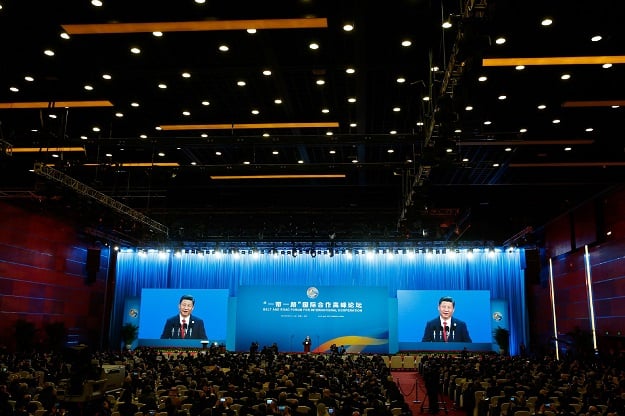
President Xi Jinping hailed the initiative for a massive network of rail and maritime links - dubbed One Belt, One Road - as "a project of the century" in his address to delegates at the two-day conference in Beijing.
Pakistan Prime Minister Nawaz Sharif, Russian President Vladimir Putin and Turkish counterpart Recep Tayyip Erdogan are among the 29 leaders expected to attend, along with delegations from North Korea and the United States. Few Western leaders are taking part.
Ambition to meet reality as China gathers world for Silk Road summit
Beijing's grand vision - unveiled by Xi in 2013 - includes the "Silk Road Economic Belt", which extends from China to central Asia through Europe, linking northern Xi'an city with Dushanbe in Tajikistan, Moscow, Rotterdam and Venice.
The "21st-century Maritime Silk Road" is a maritime transport route that plans to connect China's east coast with Europe via the South China Sea and the Indian Ocean. OBOR spans some 65 countries representing 60 per cent of the global population and around a third of global GDP. The China Development Bank alone has earmarked US$890 billion for some 900 projects.
Here are some of them:
In Pakistan, a controversial trade route was inaugurated in November to link southwestern Gwadar port, on the Arabian Sea, with Kashgar, a city in China's northwestern Xinjiang province.
The economic corridor has alarmed India because it cuts through Gilgit and Baltistan in Pakistan-administered Kashmir, disputed territory that New Delhi claims is illegally occupied.
The port will provide China with safer and more direct access to the oil-rich Middle East than the waterway trade route it currently uses through the narrow Malacca Straits. A new international airport will also be built in Gwadar. Central to the project in Pakistan is the renovation of a 487-kilo metre road that is part of China's only land passage to the Middle East.
China stresses security needs for new Silk Road initiative
The China-Europe Railway Express includes 51 rail links connecting 27 Chinese and 28 European cities, with freight trains that offer shorter transport time than sea routes.
A planned 418-kilo metre rail line between the Asian giant and Laos attempts to be the first overseas route that connects with the vast rail system in China. Once finished, it will be the longest and fastest in the southeastern Asian country.
Another 873-kilo metre high-speed railway project between China and Thailand will link the Chinese border to Thailand's ports. It will transform southwestern Yunnan province into a trading hub that exports China's goods to southeast Asian markets.
China says Silk Road plan is not tied to presidency
In Africa, OBOR will include a 471-kilo metre railway between Nairobi and Mombasa on the Indian Ocean coast. Passenger trains will zoom at 120 kilometres per hour, while freights will run at 80 kilo metres per hour and carry 25 million tonnes of cargo per year.
Three state-owned Chinese enterprises bought Turkey's third largest port, Kumport, which is considered an important joint between the 'belt' and the 'road'.
China and Malaysia are building an industrial park in Kuantan, Malaysia for steel, aluminium and palm oil processing.
In eastern Europe, a China-Belarus industrial park for high-tech businesses broke ground in Minsk in July 2014, the largest one built by the Asian country overseas.






































COMMENTS
Comments are moderated and generally will be posted if they are on-topic and not abusive.
For more information, please see our Comments FAQ